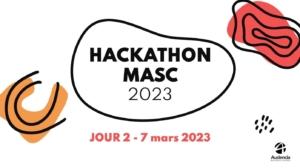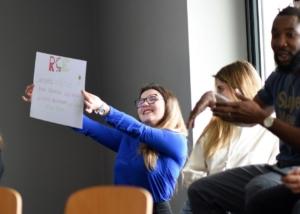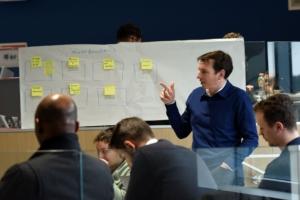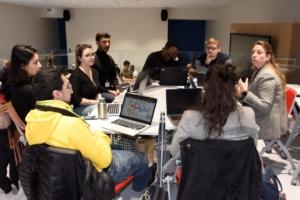- Home
- >
- THINK AND ORGANIZE ITS COURSE
- >
- Design and storyboarding
- >
- Organizing a hackathon to achieve your educational goals
It’s not always easy to diversify your teaching strategies. The Teaching & Learning department is there to help you get to grips with new teaching activities. Take, for example, the Sustainable Purchasing hackathon organised François Constant, professor of purchasing management and holder of the ‘Purchasing and Digital Innovation’ chair at Audencia. This event took place in in March 2023 for the 31 students in the Specialised Masters, MASC Mastère Spécialisé® (Purchasing and Supply Chain Management).
ILLUSTRATION
Apprentices on this programme are expected to master the tools of purchasing information systems and become familiar with agile methods for implementing global and sustainable purchasing policies in companies. Rather than creating a 24-hour course, François Constant had the idea of involving them in a hackathon. Why ? To makethe teaching more practical, , get the learners more involved and strengthen the network of economic players involved in these issues. In practice, this meant that he had to plan everything in advance to choose and coordinate the 8 partner companies, organise the task and take charge of the methodology. The Learning and Teaching team was involved in the last area, methodology. We have developed a toolkit for teachers (available alongside this article). So even if you're new to organising hackathons, it’s an exercise you can easily deploy. We can support you in the following ways:
- Meet with you to gain a more detailed understanding of your needs, the objectives to be achieved and to explain the approach using the toolkit,
- Offer one or two interim meetings to provide additional help with the elements to remember and with designing the workshops
- Training for learners who could act as coaches during the hackathon,
- (Co)facilitation during the event to share the method with the learners and possibly design ice-breaker activities,
- An assessment focused on improvements for future iterations.
It is important to note a few key success factors:
- Plan the organisation of this event, allowing 5 months for stress-free preparation:
- Find partners – contact the Careers, Training and Corporate Services Department – – ,
- Rely on in-house help for room reservations and logistics – discuss this with the programme coordinator and the Events Department,,
Note that François Constant estimates that organising a hackathon takes about as much time as creating a new course
- Explain to the partners their role during the event,
- Ensure that activities alternate between individual and collective production to facilitate inclusion,
- Structure the workshops,
- Be prepared to be adaptable in the event of unforeseen eventualities,
- Make yourself available throughout the hackathon,
- Be very clear about the instructions and deliverables expected...
The result of this hackathon was surprising, as it mobilised a group that had been passive in other courses, and resulted in very high level of learner satisfaction.At the end of the project, 2 learners received a job offer from one of the partner companies, which illustrates the hackathon’s ability to help students put the skills acquired into practice. Admittedly, this approach is time-consuming (let’s not underestimate that!) but it guarantees an exciting immersion experience. Over to you!











